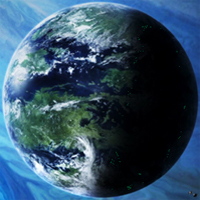
Pandora
CBUB Wins: 1
CBUB Losses: 0
CBUB Ties: 0
Win Percentage: 100.00%
Added by: Venom 2009
Read more about Pandora at: Wikipedia
Official Site: Twentieth Century Fox
In the 2009 science fiction film Avatar, director James Cameron conceived a fictional universe in which humans seek to mine unobtanium on the fictional exoplanet moon, Pandora. The Earth-like moon is inhabited by a sapient indigenous humanoid species called the Na'vi, and varied fauna and flora. Resources Development Administration (RDA) scientists, administrators, recruits, support, and security personnel travel to Pandora in the 22nd century to discover this lush world, which is inhabited by many lifeforms including the human-like Na'vi. The clan with which the humans have contact in the film "[lives] in a giant tree that sits on a vast store of a mineral called unobtanium, which humans want as an energy supply."
The Pandoran biosphere teems with a biodiversity of bioluminescent species ranging from hexapoda animals to other types of exotic fauna and flora. The Pandoran ecology forms a vast neural network spanning the entire lunar surface into which the Na'vi and other creatures can connect. The strength of this collective consciousness is powerfully illustrated when the human invaders are defeated in battle by the Pandoran ecology, after the resolute Na'vi were nearly defeated. Cameron utilized a team of expert advisors in order to make the various examples of fauna and flora as scientifically feasible as possible.
In the film, Pandora is depicted as being located in the Alpha Centauri A system approximately away from Earth. It is one of the many natural satellite orbiting the gas giant Polyphemus, named for the Polyphemus of Greek mythology. Pandora's atmosphere is a mix of nitrogen, oxygen, carbon dioxide, xenon, ammonia, methane, and hydrogen sulfide. Humans cannot breathe this, so they wear Exo-Packs when outside their buildings or vehicles.
Leri Greer, a designer at Weta Workshop, explained the unusual day/night cycle experienced by the Na'vi, who inhabit a moon orbiting a planet, that in turn orbits around a star.
CBUB Match Record:
| Result | Opponent | My Score | Their Score | |
|---|---|---|---|---|
| Win | The Eight Legged Freaks | 4 | to | 0 |
No Fantasy Draft Records Available
